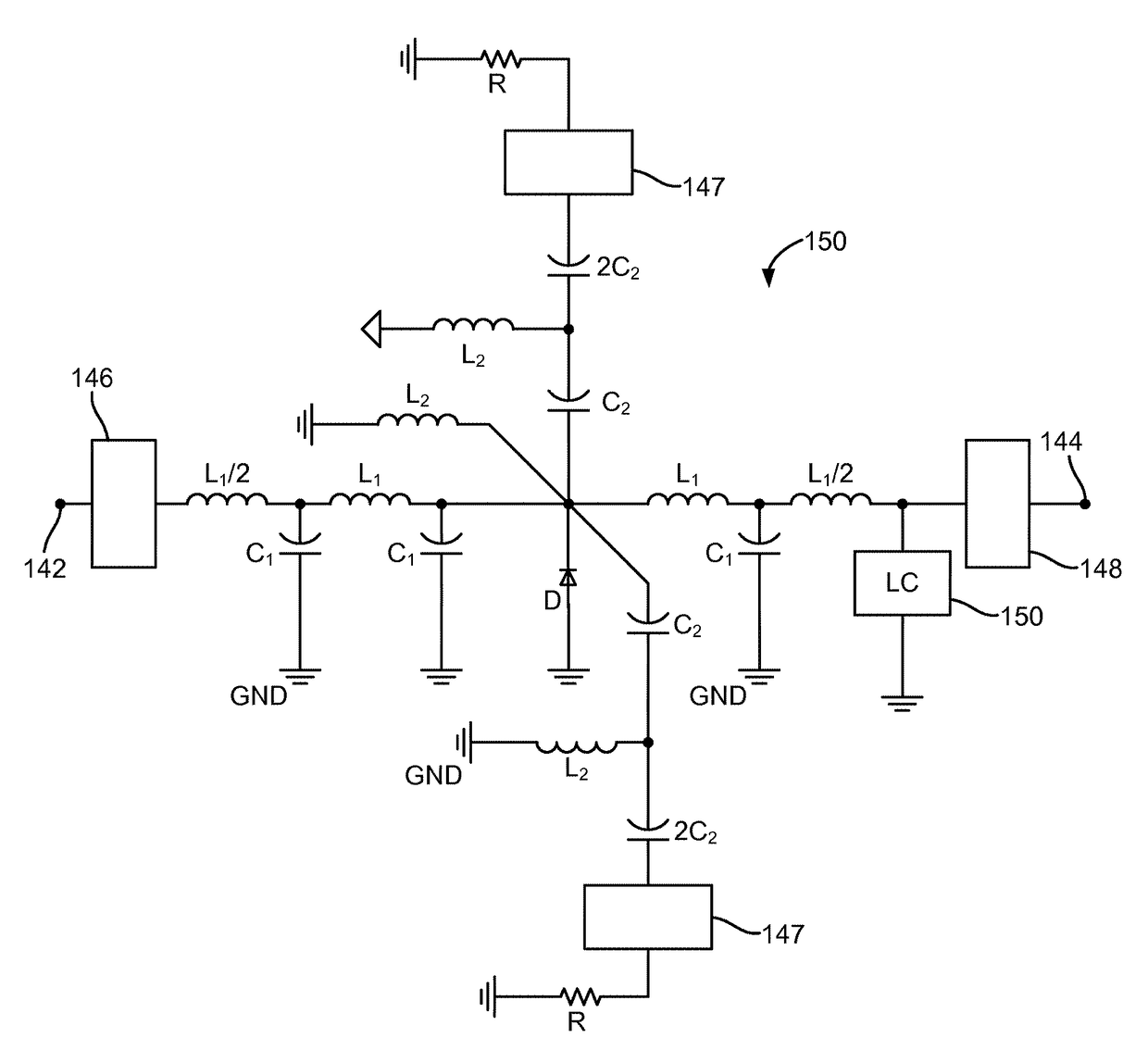Non-magnetic frequency selective limiters and signal-to-noise enhancers
a frequency selective limiter and signal-to-noise enhancer technology, applied in the direction of limiting amplitude, electrical equipment, waveguide devices, etc., can solve the problems of incompatibility with integrated circuit technology, bulky magnetic materials, heavy weight,
- Summary
- Abstract
- Description
- Claims
- Application Information
AI Technical Summary
Benefits of technology
Problems solved by technology
Method used
Image
Examples
Embodiment Construction
[0051]The present inventor has realized that the magnetostatic to spin-wave coupling of magnetic material FSLs can be mimicked in non-magnetic material based on parametrically coupled transmission line resonators. In this case, a non-magnetic material based FSL can be provided.
[0052]FIGS. 1A-1C illustrate a non-magnetic material FSL according to an embodiment, where FIG. 1A illustrates a first resonator oscillating at a fundamental frequency ωS, FIG. 1B illustrates a second resonator oscillating at one half the fundamental frequency ωS, i.e., at ωS / 2, and FIG. 1C and FIG. 1D illustrate the non-magnetic material FSL with the first resonator parametrically coupled with the second resonator.
[0053]Referring to FIG. 1A, the first resonator 110 oscillates at a fundamental frequency ωS. That is, for a signal with a frequency ω input to the first resonator 110, an output signal with a frequency ω is output. The first resonator 110 includes an input 112, which receives an input signal, and a...
PUM
 Login to View More
Login to View More Abstract
Description
Claims
Application Information
 Login to View More
Login to View More - R&D
- Intellectual Property
- Life Sciences
- Materials
- Tech Scout
- Unparalleled Data Quality
- Higher Quality Content
- 60% Fewer Hallucinations
Browse by: Latest US Patents, China's latest patents, Technical Efficacy Thesaurus, Application Domain, Technology Topic, Popular Technical Reports.
© 2025 PatSnap. All rights reserved.Legal|Privacy policy|Modern Slavery Act Transparency Statement|Sitemap|About US| Contact US: help@patsnap.com



